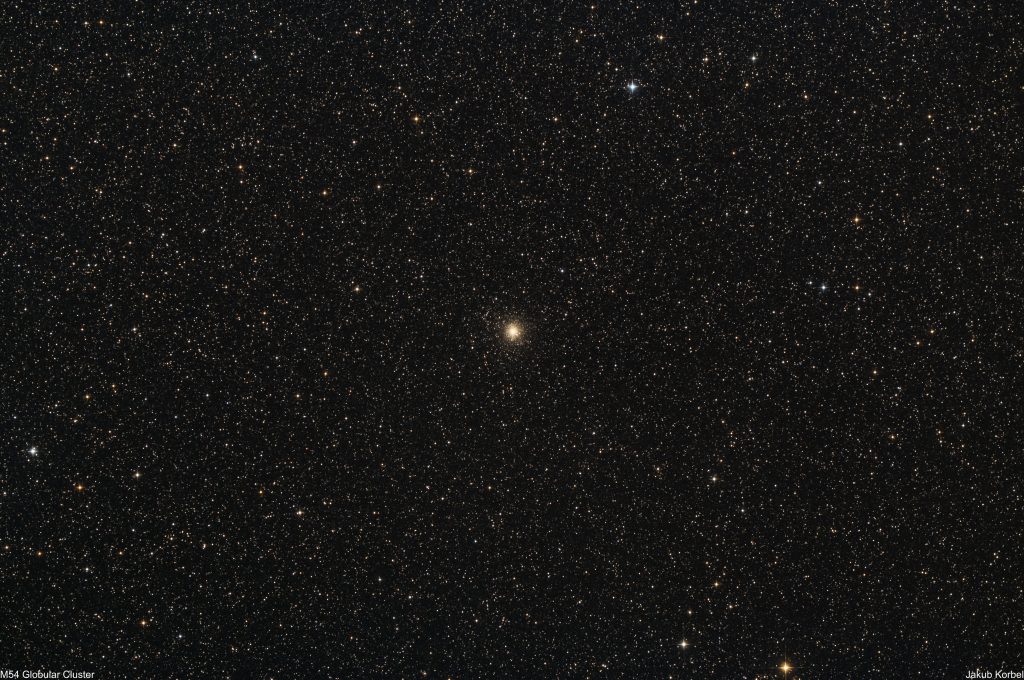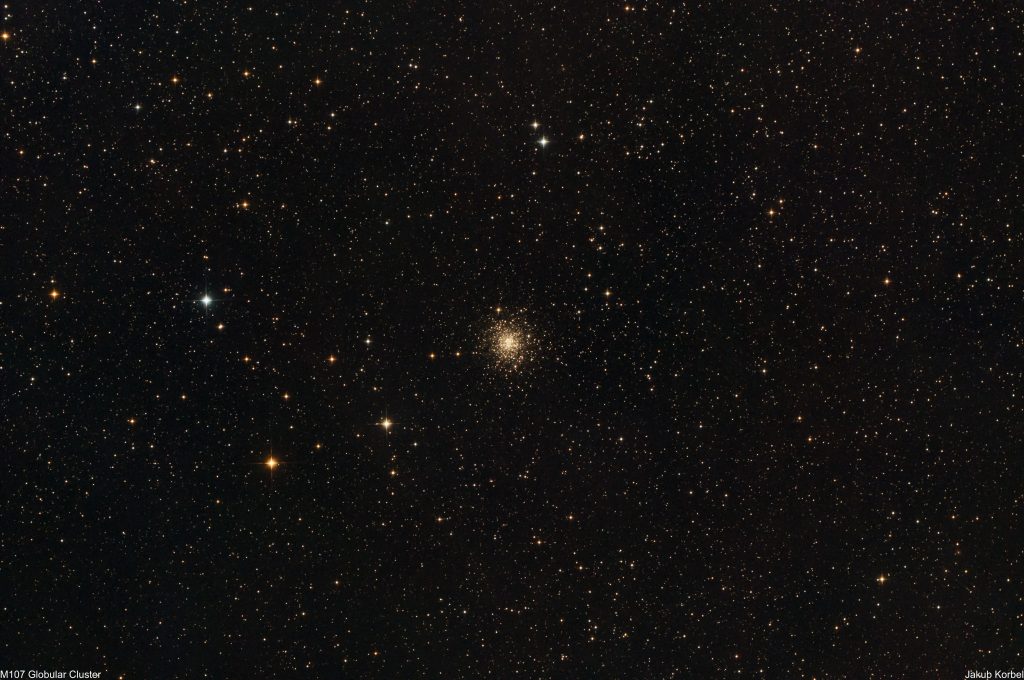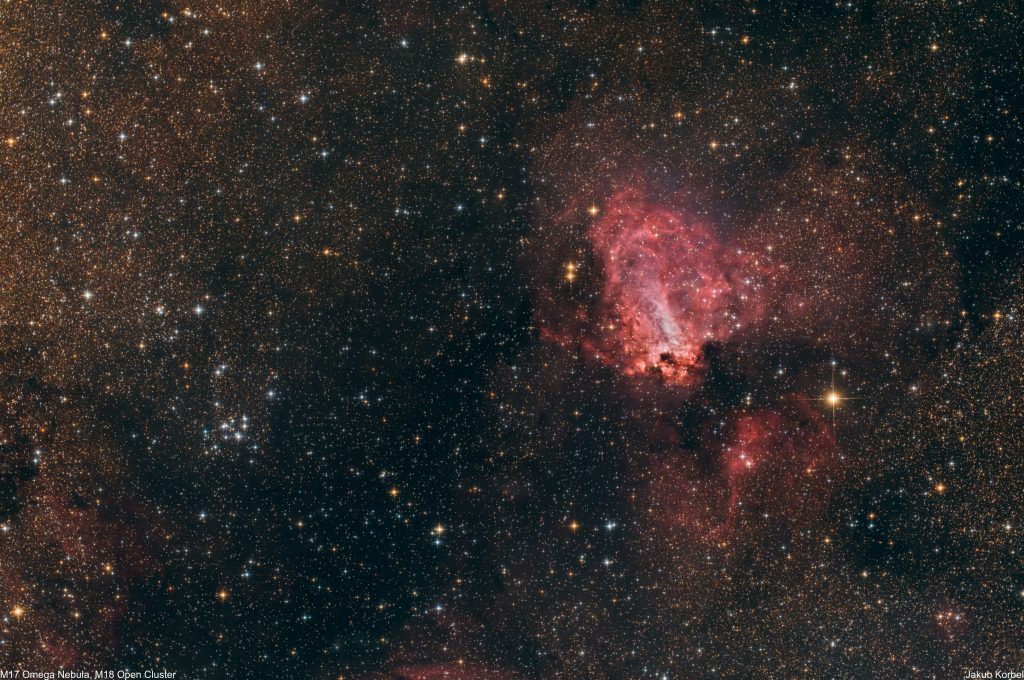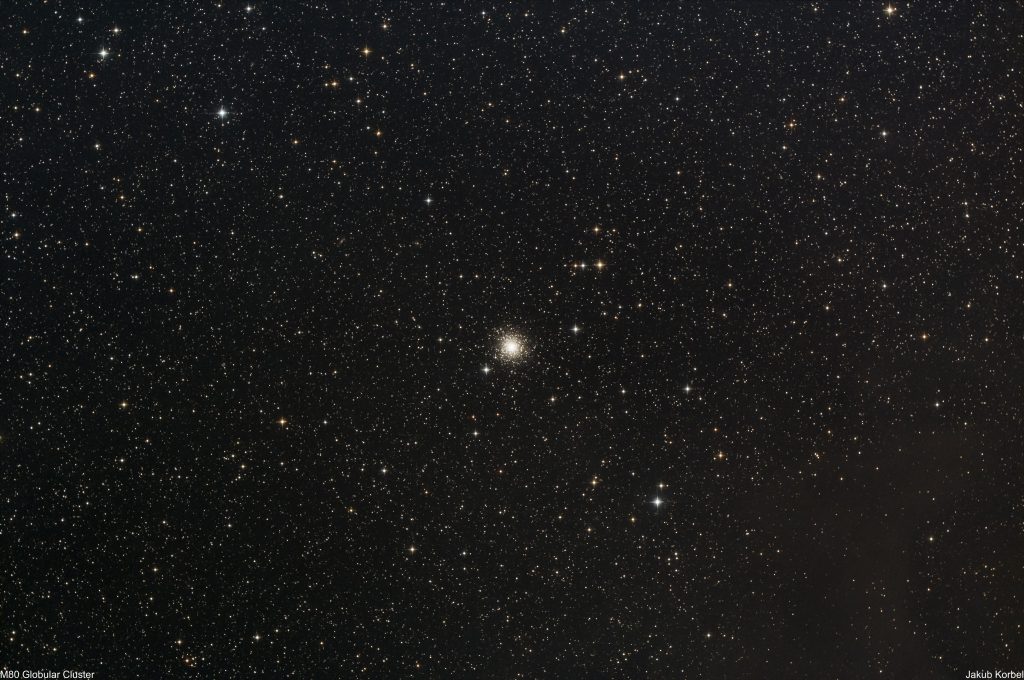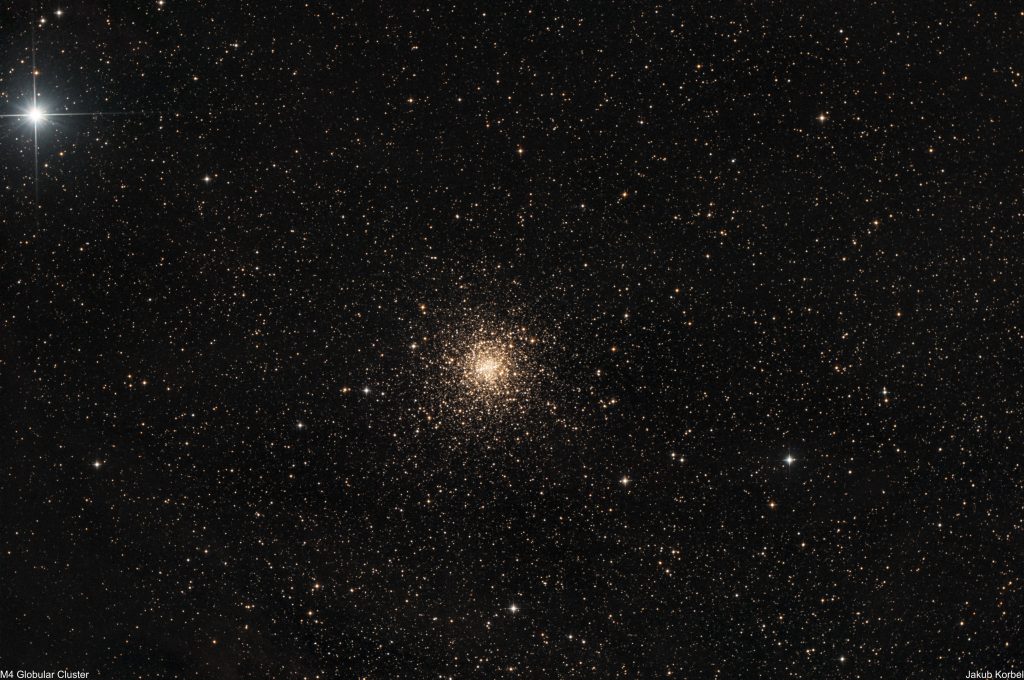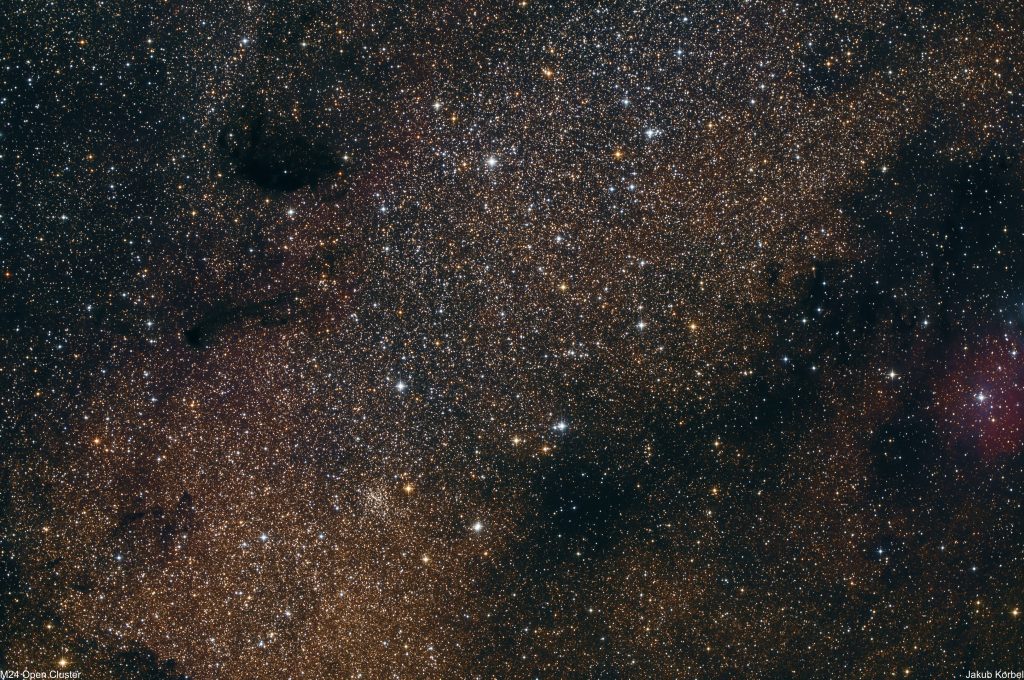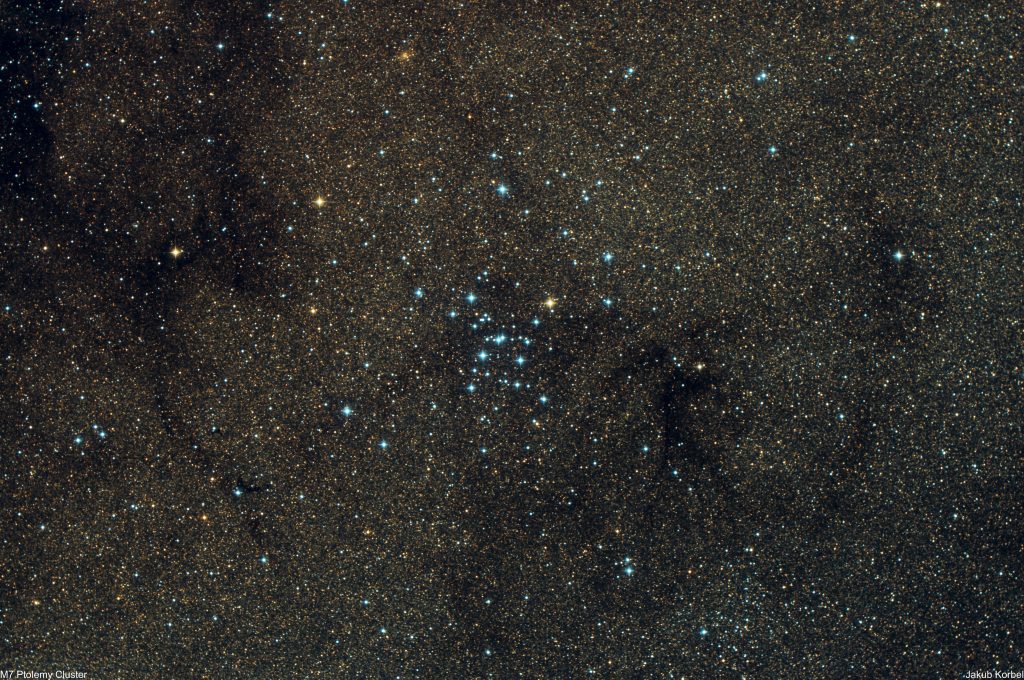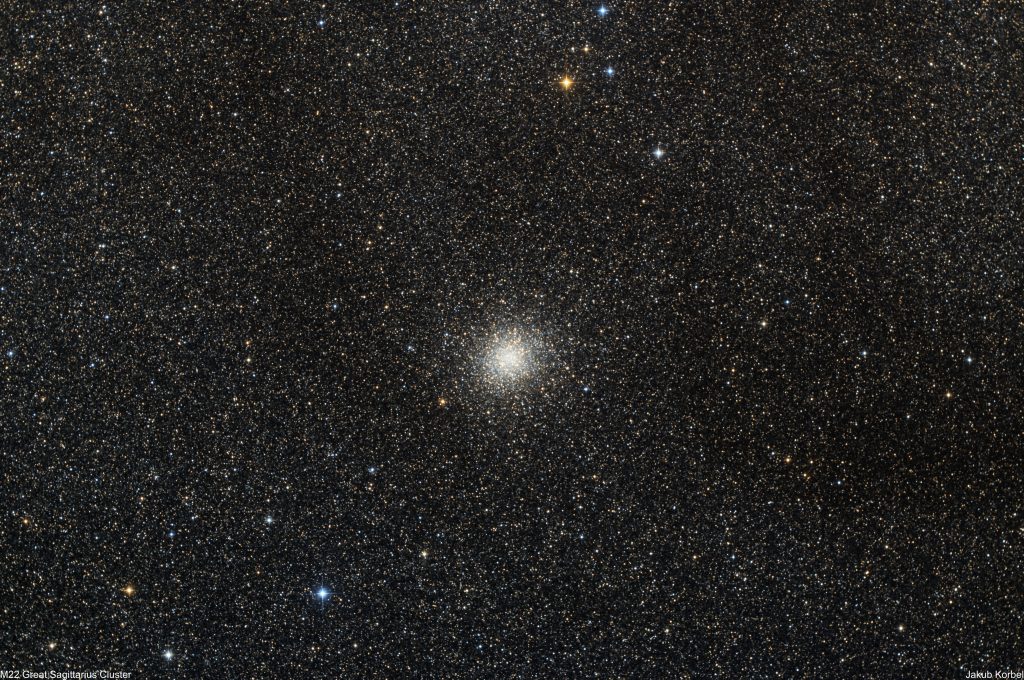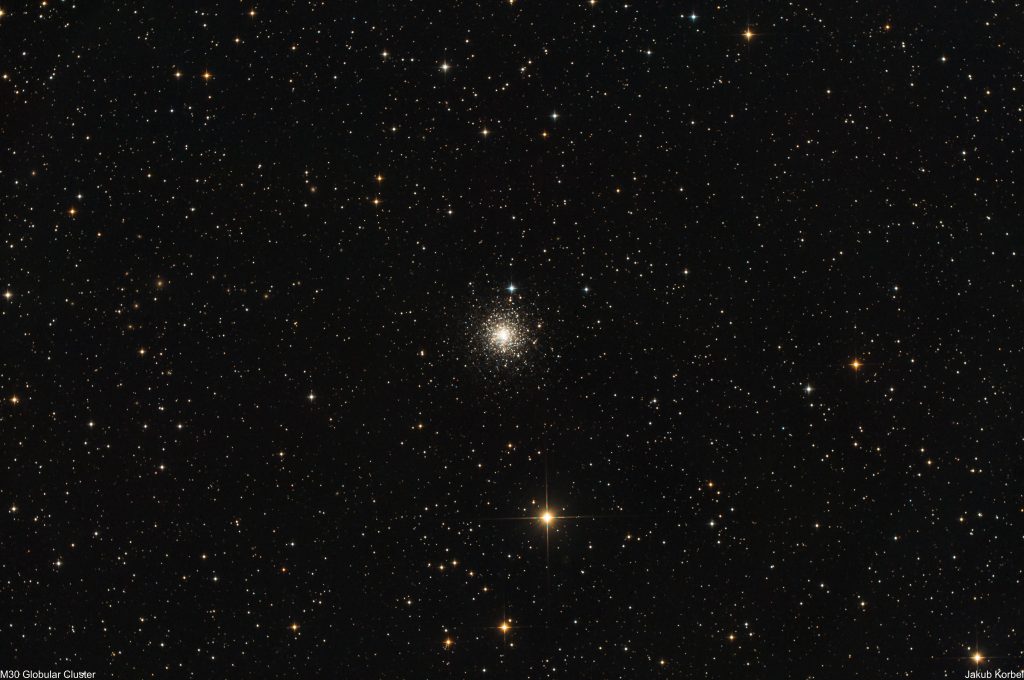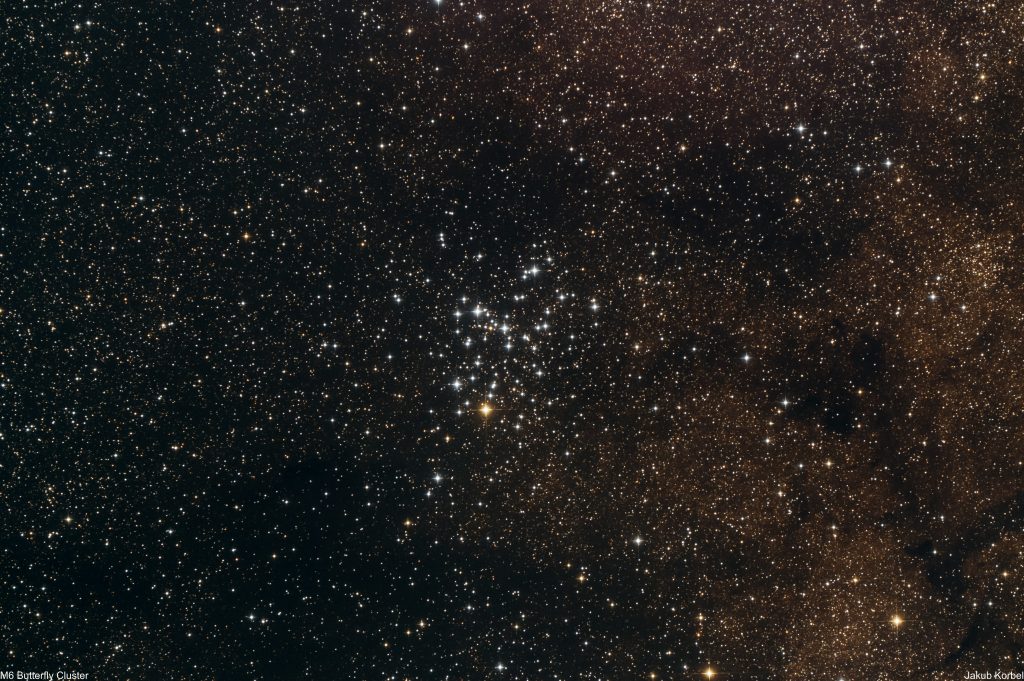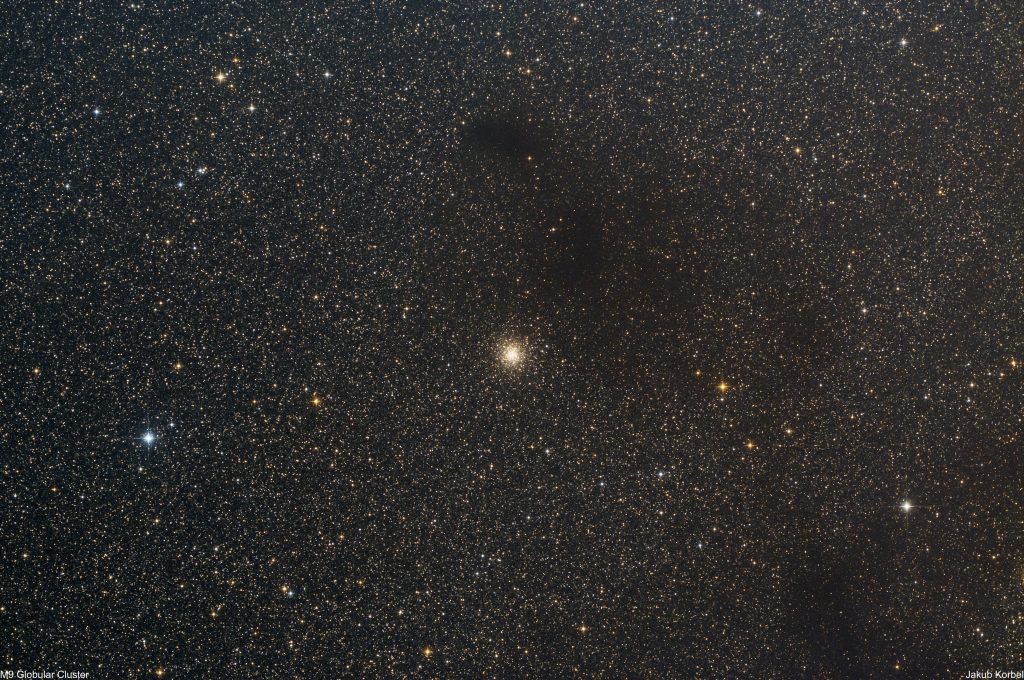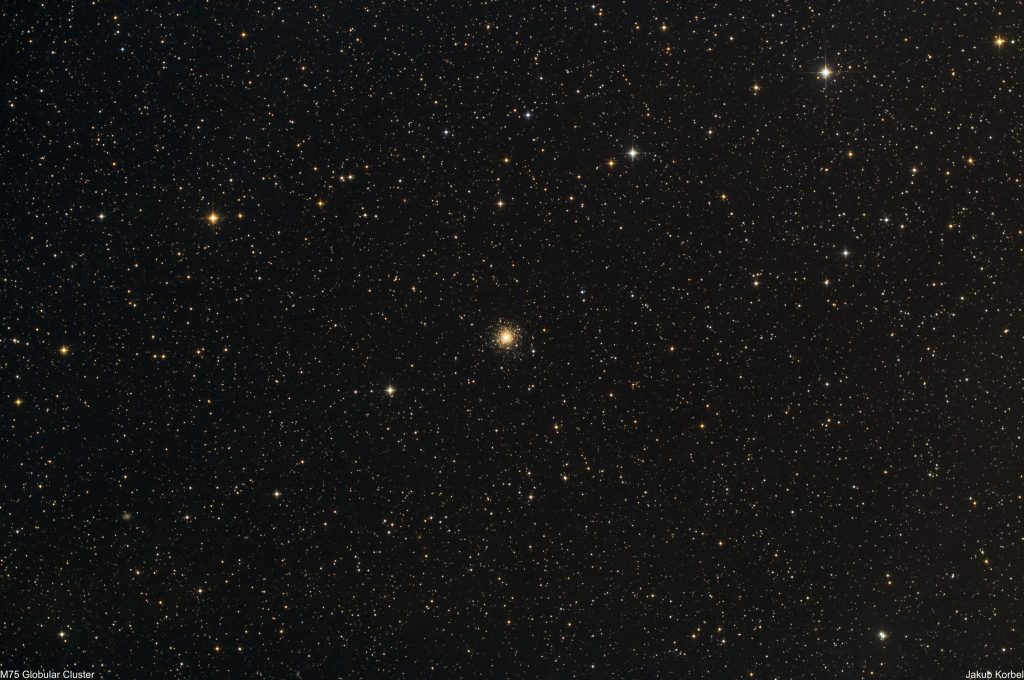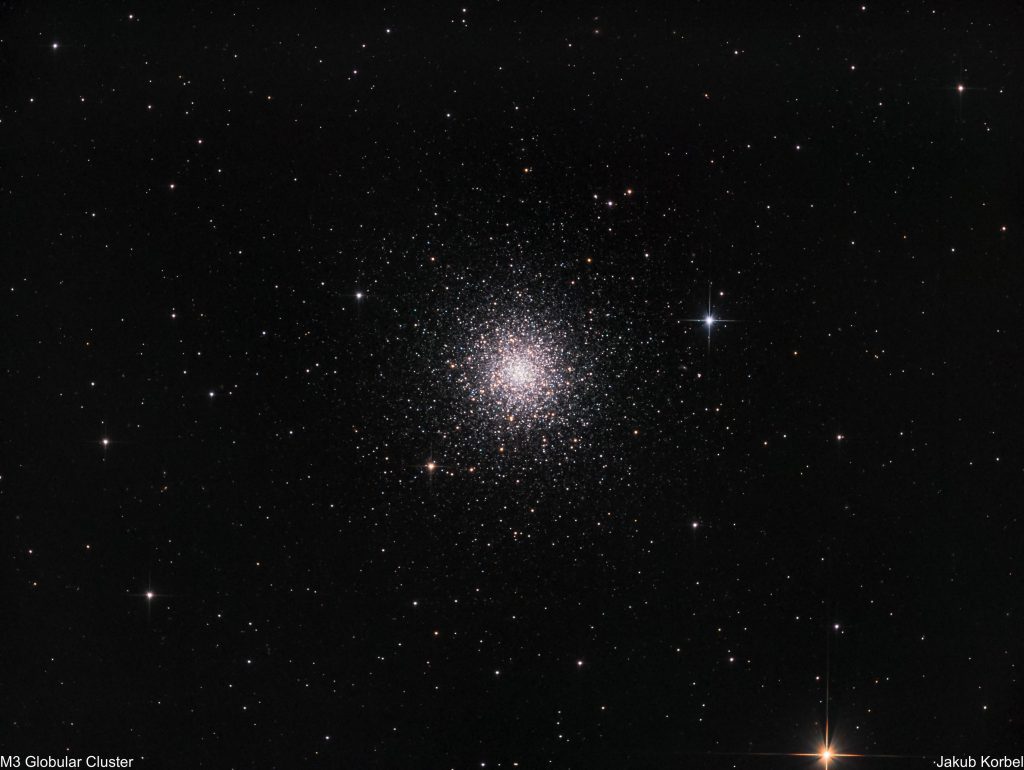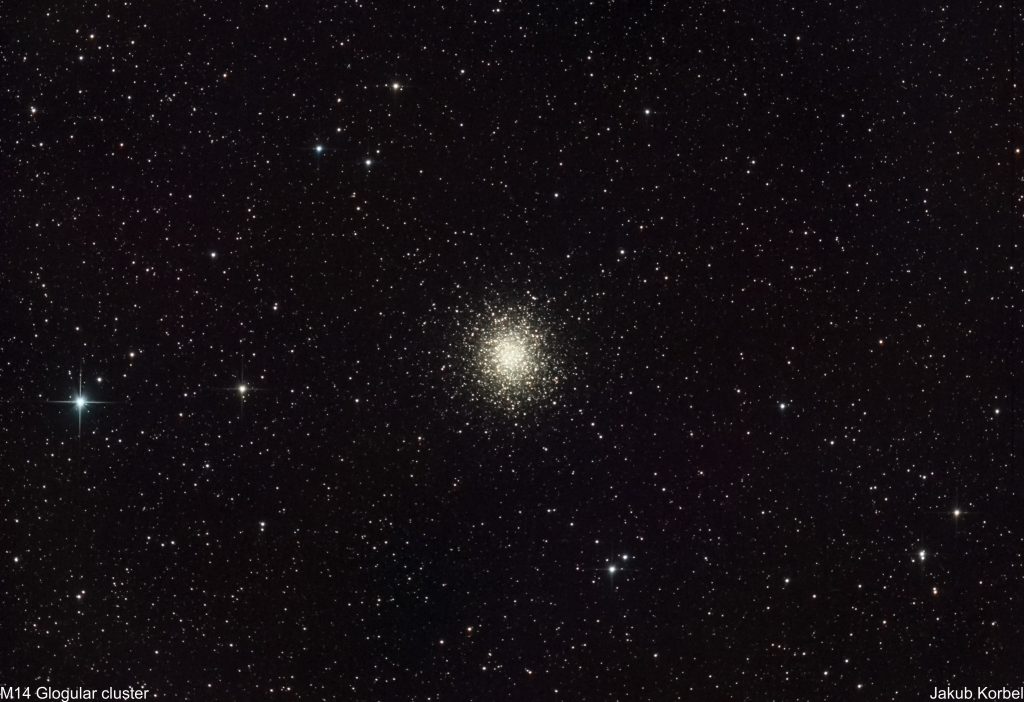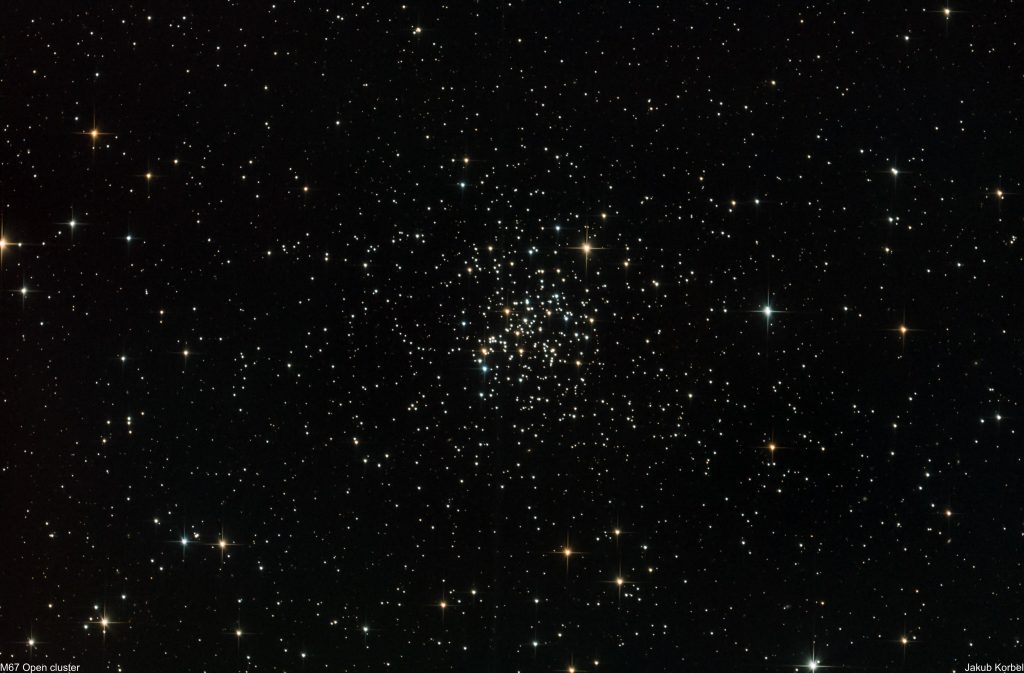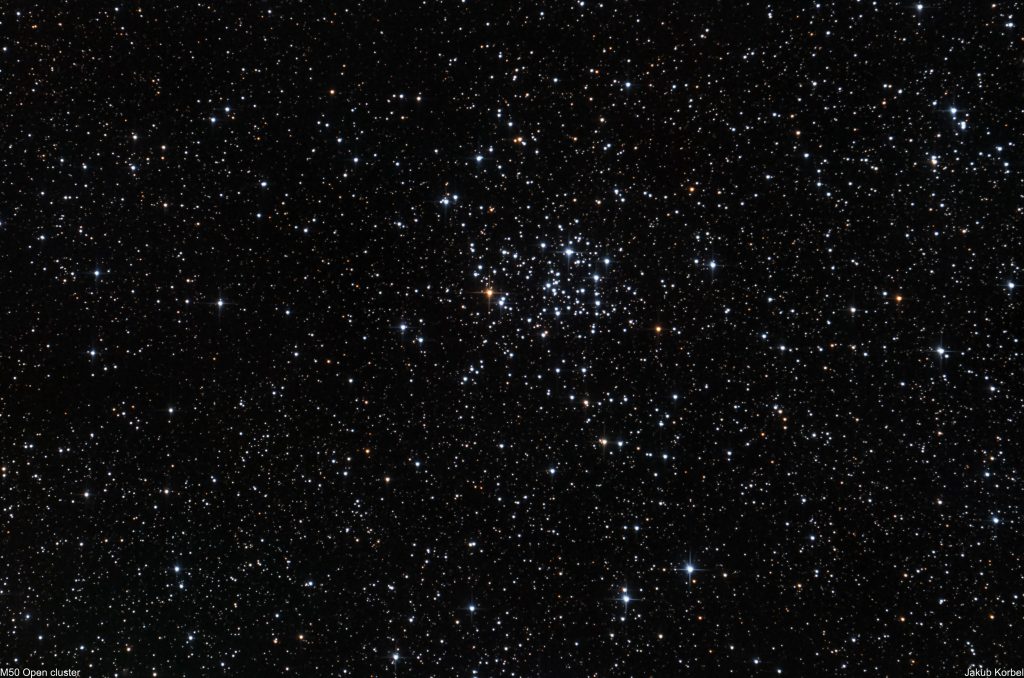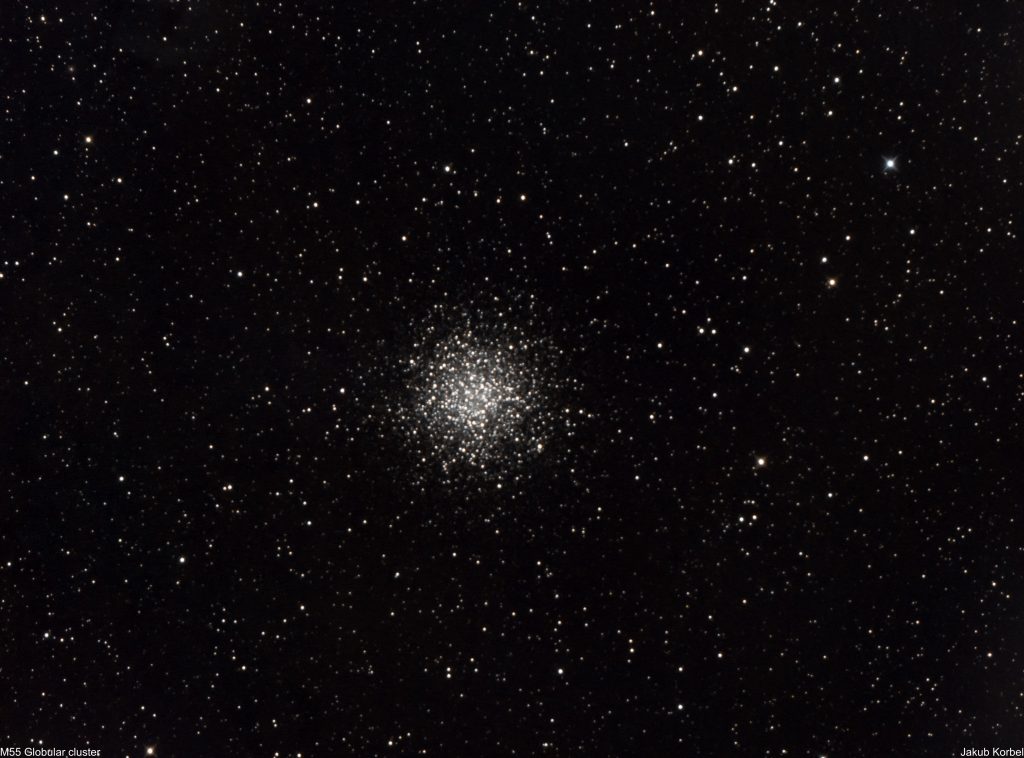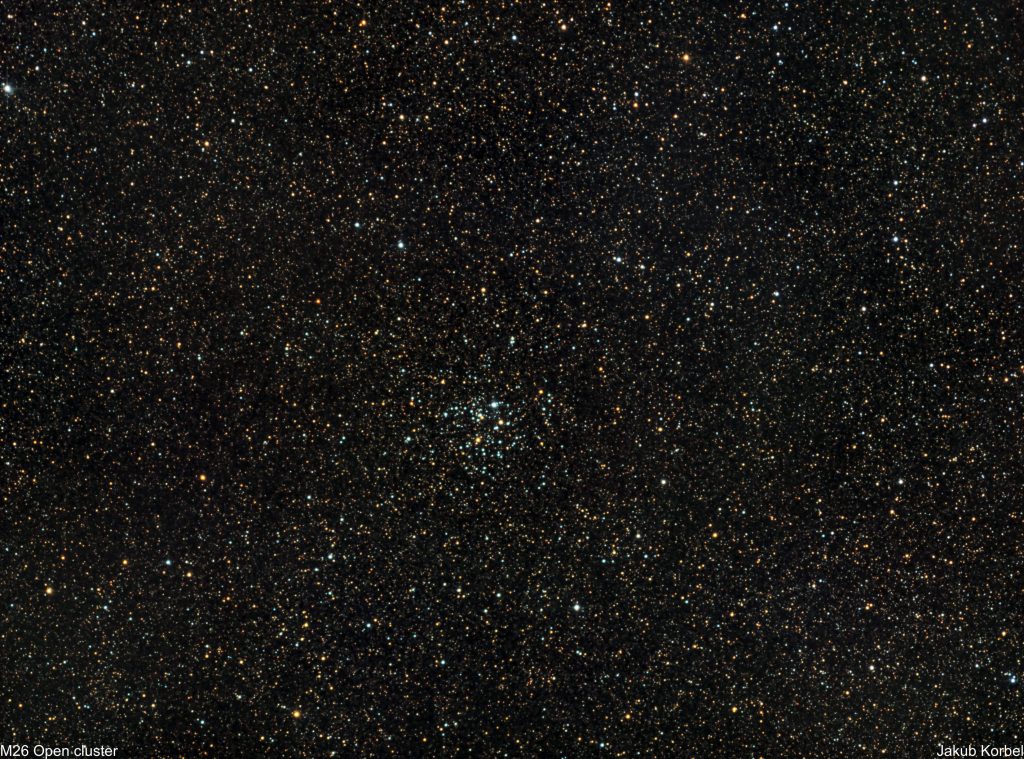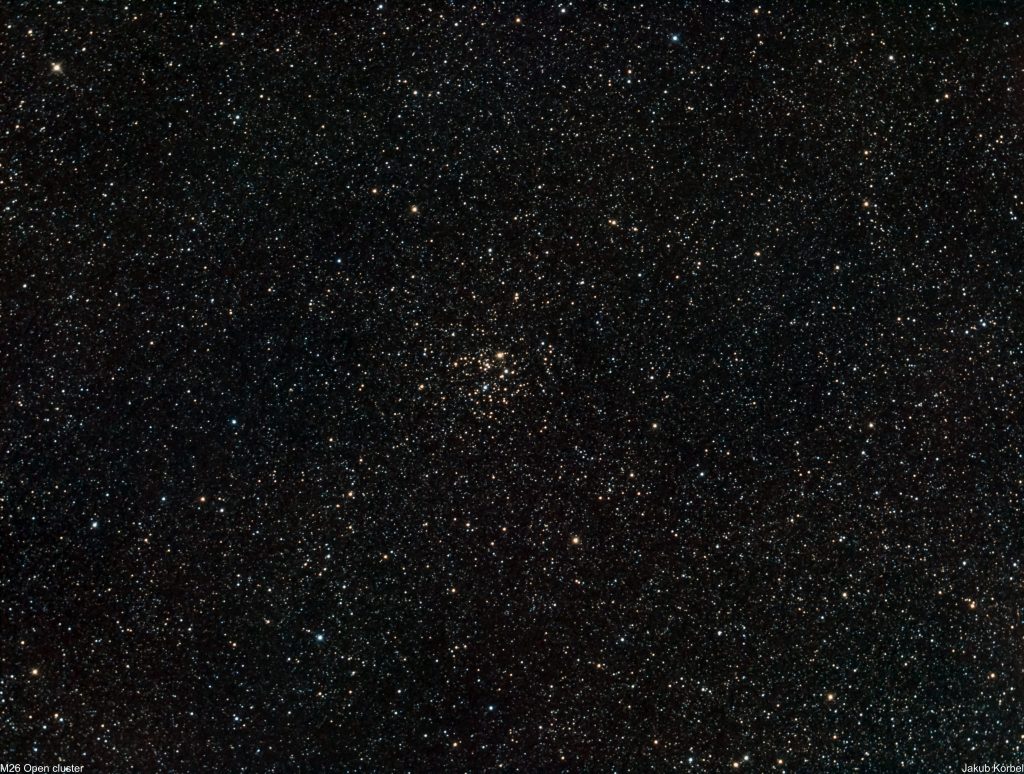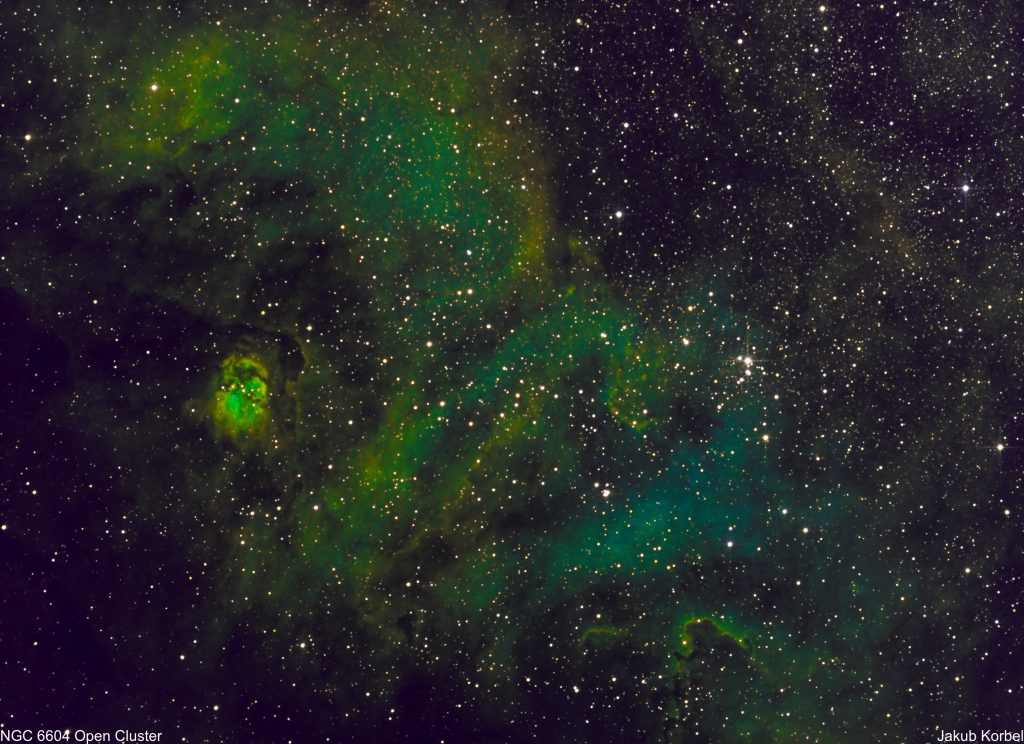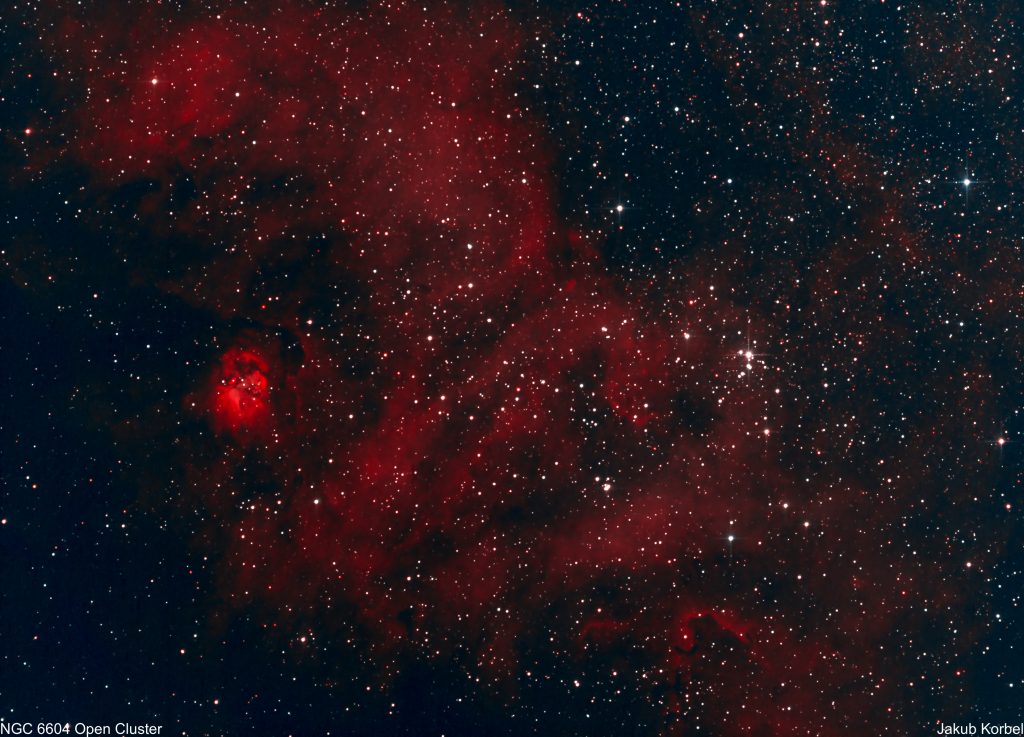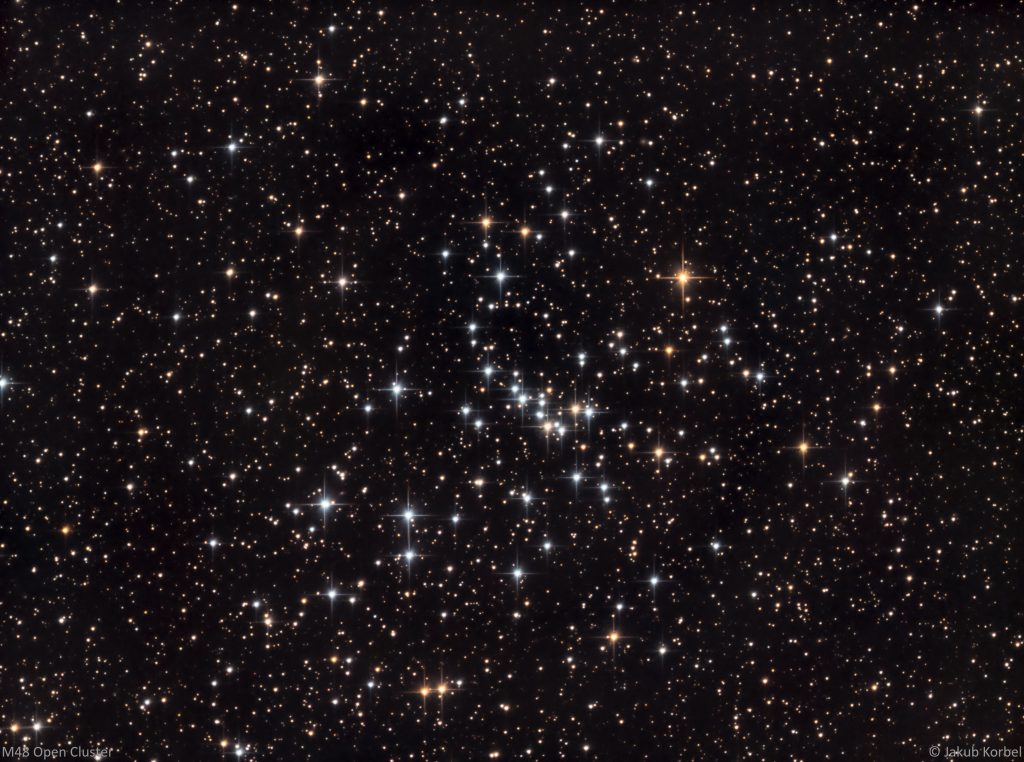Messier 54 is a globular cluster located in constellation Sagittarius. It has been assumed that the cluster’s distance is 50’000 light-years. Recently (1994) it was discovered that this cluster doesn’t belong to Milky Way galaxy, but it’s a part of Dwarf elliptic galaxy in Sagittarius and it is approximately 86’400 light-year from Earth. This means M54 is first discovered globular cluster outside of our galaxy.
Technical details:
| Telescope | Newton 150/600 mm |
| Aperture | 150 mm |
| Focal length | 660 mm |
| Mount | iOptron CEM25P |
| Autoguiding | QHYCCD miniGuideScope 130 mm f/4.3, ZWO 174 MM |
| Camera | ZWO 071 Pro @-10C |
| Corrector | Explore Scientific HR coma corrector |
| Filters | Astronomik L-1 - UV IR Block Filter |
| Exposure | 25x120s, Gain 134, bin 1x1, |
| Date | 2018-09-09 |

